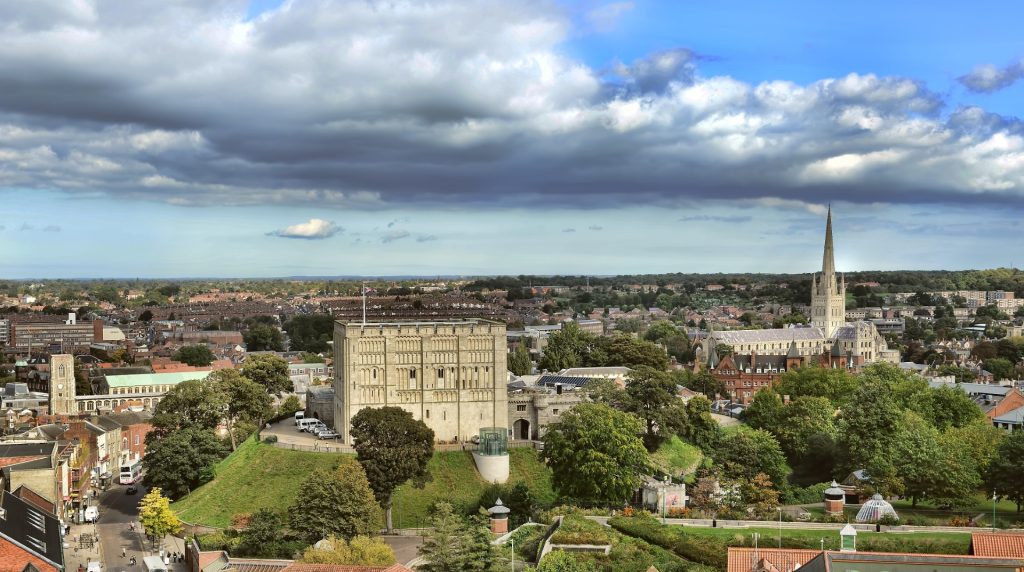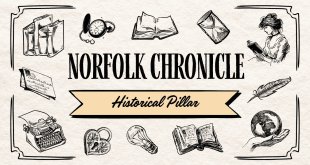Norfolk, a state in the East of England, is steeped in history and rich in historical heritage. It is a spot where old castles, medieval churches, great estates, and coastal defenses tell the story of decades past.
Norfolk has a significant influence on the history of Britain, from Roman times to the Industrial Revolution. With its beautiful scenery and historic value, Norfolk offers a wealth of sights that attract past fans, travellers, and locals alike.
Historical Landmarks in Norfolk

In this article, we may discover some of the most impressive historical monuments in Norfolk, each with its own special account.
These websites offer a window into the history, showcasing Norfolk’s structural, political, and cultural development.
Whether you are a history buff, a relaxed traveller, or a nearby seeking to learn more about your province, this link will take you on a voyage through Norfolk’s rich history.
1. Norwich Castle
History and Infrastructure
Norwich Castle, one of Norfolk’s most well-known monuments, was constructed by the Normans in the late 11th era. William the Conqueror gave the tower its name and used it as a royal fortress to bolster Norman dominance over East Anglia. One of the best-preserved illustrations of its kind in Europe is its unique square keep, which was constructed in the Romanesque style.
The lord’s history is vast and varied. Originally used as a royal house, it eventually became a prison in the 14th century. Now, Norwich Castle is a museum and art museum, cover a wide range of exhibits, including artifacts from Norfolk’s history, great skill collections, and historical treasures.
Why You Should Attend
Visitors can visit Norwich Castle, which has a wealth of museum collections and historic architecture. With its great stone walls and stunning views of Norwich, the keep itself is a must-see. The exhibition features displays on local history, natural history, and artwork, making it an academic and rewarding experience for all ages.
2. Blickling Hall
History and Legacy
Blickling Hall, located near Aylsham, is one of Norfolk’s grandest stately homes and a quintessential example of Jacobean architecture. Built in the early 17th century, it was once the home of the Boleyn family, including Anne Boleyn, the ill-fated second wife of King Henry VIII. According to legend, her ghost resides in the hall, which adds to the mystery and mystery of this historical site.
The hall was designed with ornate red-brick facades, vast gardens, and a grand library that houses over 12, 500 rare books. Blickling Hall has been a symbol of wealth and power that has been passed down through various wealthy families throughout its history. It was bequeathed to the National Trust in 1940, who now runs the estate and welcomes visitors to its splendor.
Why You Should Attend
Blickling Hall is a must-visit for anyone interested in British history, architecture, or horticulture. The gardens are a masterpiece in their own right, providing stunning views year-round. The hall’s interior is full of historical treasures, including rare books and artwork. Additionally, its historical connection to Anne Boleyn adds a fascinating layer of Tudor intrigue.
3. Castle Acre Priory
History and Religious Significance
Founded in the late 11th century, Castle Acre Priory is one of the most well-preserved monastic sites in England. The powerful de Warenne family, who were close ally of William the Conqueror, built the priory. It was a member of the Benedictine monks ‘ organization known as the Cluniac order, which pioneered changes to traditional religious practices at the time.
Prior to Norfolk’s dissolution under King Henry VIII in the 16th century, Castle Acre Priory had a significant influence on medieval religious life. The remains of the priory, including its cloisters, chapter house, and church, provide a fascinating glimpse into the life of medieval monks. The site is now under the control of English Heritage, providing educational opportunities and guided tours.
Why You Should Attend
For those interested in medieval architecture and religious history, Castle Acre Priory is the ideal place to visit. Visitors can wander through the atmospheric ruins, find out about the monks ‘ daily lives, and take a tour of the stunning Norfolk countryside that surrounds the site. Norfolk’s religious heritage can be considered in the serene surroundings of Castle Acre.
4. Holkham Hall
History and Infrastructure
Holkham Hall, located near the North Norfolk coast, is a stunning example of Palladian architecture, a style inspired by the classical buildings of ancient Rome. Holkham Hall, which was built in the 18th century for Thomas Coke, the 1st Earl of Leicester, was constructed to reflect the wealth and sophistication of its owners.
The estate surrounding the hall includes vast parklands, a lake, and woodlands, making it one of the most impressive country estates in England. Inside the hall, visitors can explore grand state rooms adorned with fine art, tapestries, and period furniture. The Coke family’s ancestral home is still in the hall, which is why it is still open to the public.
Why You Should Attend
Holkham Hall provides a unique opportunity to tour one of Britain’s finest stately residences. The vast parklands are perfect for walking, cycling, and picnicking, while the hall itself provides a fascinating insight into the lives of Norfolk’s aristocracy. The nearby Holkham Beach is frequently regarded as one of England’s most stunning beaches, making it the ideal place to spend a full day.
5. Sandringham Estate
History of the Royal Estate
Sandringham Estate is perhaps Norfolk’s most famous landmark, being the much-loved private residence of the British Royal Family. Sandringham, which was purchased by Queen Victoria in 1862, has since become the country’s retreat for a number of royals, including Queen Elizabeth II, who frequently spends Christmas here.
The estate spans over 20, 000 acres and includes the royal residence, extensive gardens, parklands, and woodlands. The house itself is a prime example of Edwardian architecture, and the estate’s museum offers visitors a chance to view royal memorabilia and artifacts from the estate’s history.
Why You Should Attend
The Sandringham Estate offers a unique opportunity to experience the royal lifestyle. The gardens and grounds are open to the public, and visitors can tour parts of the house, view royal carriages and vehicles, and explore the estate’s stunning parklands. Sandringham provides a personal look into royal traditions and history for those interested in the British monarchy.
6. Walsingham Abbey
History and Religious Significance
Walsingham Abbey, located in the village of Little Walsingham, has been a site of pilgrimage for Christians since the 11th century. The Shrine of Our Lady of Walsingham, which quickly became one of the most significant pilgrimage sites in medieval England, attracted visitors from all over Europe, was constructed in the abbey.
The ruins of the original abbey are still a pilgrimage site for Catholics and Anglicans today despite the fact that the original abbey was destroyed during the 16th century’s dissolution. The site hosts annual religious holidays that draw thousands of visitors, and the beautiful gardens and ruins provide a serene setting for reflection.
Why You Should Attend
In the heart of Norfolk, Walsingham Abbey offers a tranquil and contemplative experience. The site’s picturesque ruins and the surrounding gardens are a must-see for those interested in religious history, and they also make for the perfect place for quiet reflection. The annual pilgrimage and religious holidays also provide a distinctive cultural experience.
7. The Broads National Park
History and Natural Beauty
While not a traditional “landmark” in the architectural sense, The Broads National Park is one of Norfolk’s most significant historical and natural landmarks. The Broads, a network of rivers and lakes, was created as a result of antiquitous peat excavations that eventually created a body of water. The waterways have been vital for trade, transportation, and leisure for centuries.
Today, the Broads are a haven for wildlife and outdoor enthusiasts. Visitors can explore the area by boat, foot, or bicycle, discovering traditional windmills, historic churches, and picturesque villages along the way. The Broads are a protected area with a number of endangered species of plants and animals, making them a significant natural landmark of a significant historical significance.
Why You Should Attend
The Broads are a unique combination of history and nature, making them the ideal place to travel to Norfolk’s natural landscape and historic waterways. Whether you are sailing, birdwatching, or simply enjoying a peaceful walk along the riverbanks, the Broads offer a tranquil escape steeped in history.
Read also: Sainsbury Centre for Visual Arts: A Cultural Gem in Norfolk
Conclusion
Norfolk is a county rich in history, with numerous historical sites that illustrate the country’s past. Norfolk has a wide range of historical sites that reflect its distinctive cultural and architectural heritage, from medieval castles and stately homes to pilgrimage sites and natural wonders.
These historic landmarks give visitors and locals the chance to learn about Norfolk’s fascinating past and admire its stunning scenery. Each of these sites stands as a testament to Norfolk’s enduring significance in Britain’s history, making it a destination that should be on every history lover’s list.
 Norfolk Web Publications Web Publications in Norfolk!
Norfolk Web Publications Web Publications in Norfolk!

